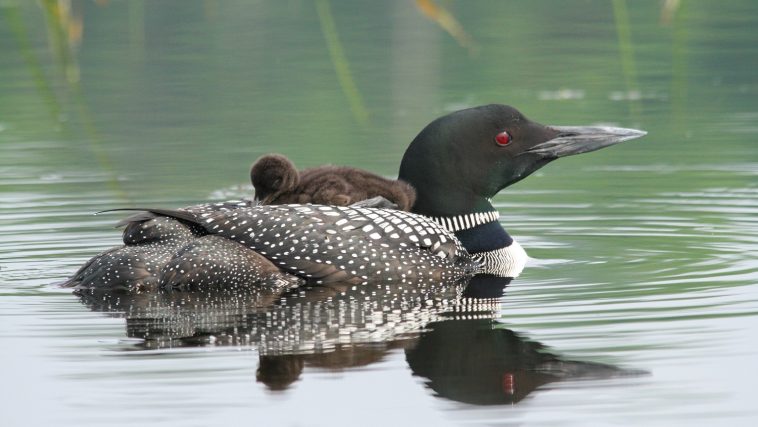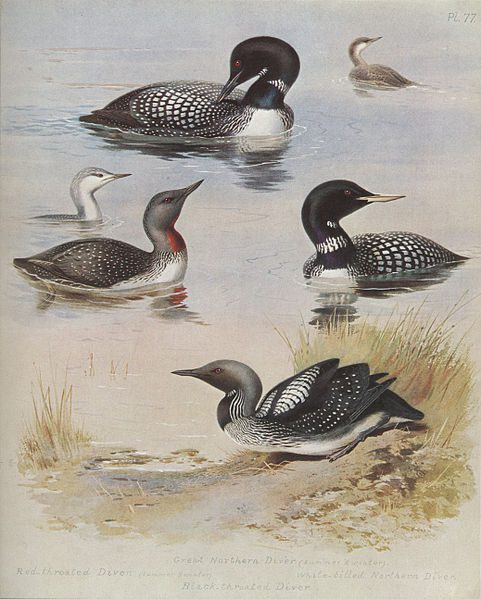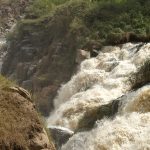[Originally published as Engineering the Loon]
“Loon” is the common name for diving birds placed in the order Gaviiformes that have heavy, straight, sharp-edged bills. Loons have excellent vision that allows them to more easily find their food underwater, and they are adept at diving to catch fish, amphibians, and crustaceans.
Along with their rigid bill, which is perfect for stabbing or grasping, they are equipped with other features engineered to allow them to thrive in lake and ocean environments. For example, you may have noticed that loons have red eyes. This could be because red helps filter out blue and green (colors of water) so they can see better underwater (Figure 1).
In addition, loon eyes have been designed with a set of transparent eyelids to cover their eyes as they dive under water in search of food. Their rear-positioned legs are short and their three front toes on each foot are joined by webs. Along with a torpedo-shaped body, these characteristics enable the loon to propel quickly and efficiently through water. Another engineered aspect of loons is the built-in valve in their mouths that closes when water is present, so that they don’t swallow a mouthful of water whenever grasping a fish or other prey. I recommend that the reader take the time to look at some of the many videos on You-Tube that show these amazing birds swimming under water.
The loon also has the ability to limit the flow of blood to it wings and digestive tract during water dives thought to extend down to 250 feet deep. This engineered capability allows the loon to hold its breath underwater for extended periods. Wikipedia said loons can stay underwater for up to 90 seconds. Another source I found stated the maximum limit to be as long as 15 minutes!¹
In the Archibald Thorburn painting, the four most common loon species are depicted.
- Top: Great Northern Diver (Gavia immer).
- Mid-left: Red-throated Diver (Gavia stellata).
- Mid-right: White-billed Diver (Gavia adamsil).
- Bottom: Black-throated Diver (Gavia arctica).
Loons are strong fliers as well as divers and are capable of 500-mile flights during migration. However, their body shape, solid bones, and high mass to wing area ratio complicates takeoff. Normally they will run upwind across the water surface with wings flapping to generate the lift needed to take off. However, the Red-throated Diver is designed enough differently from the other species so that it can take off from land, a real problem for the other species.
In the top photo, notice how the loon’s heavy design keeps it low in the water when swimming. This is advantageous for initiating their diving action. Other waterfowl, such as ducks and geese, float much higher in the water.
In conclusion, these beautiful birds have been engineered to be great divers, swimmers, fliers, and fishers. It boggles my mind to think that so many still believe this all came about due to random mutations, natural selection, and deep time. No, the truth is that the glory must go to the Creator God for the marvelously engineered loon.
Footnote
- Kleiss, Richard & Tina, A Closer Look at the Evidence, Search for the Truth Publications, 2003, September 18.








